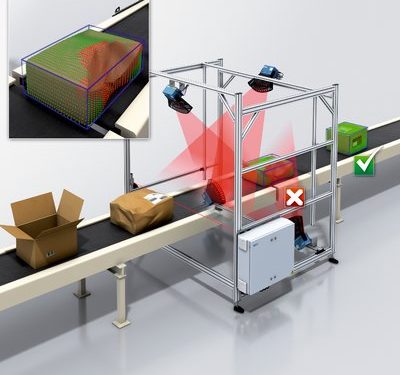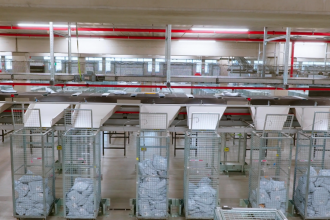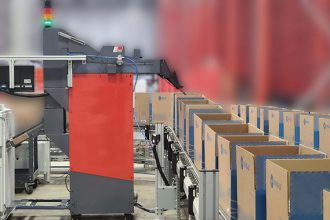Why SLAM Should Include Dimensioning Equipment

When it comes to the final 100 feet of your operations, automation can be the name of the game to increase efficiencies. Using tools for scanning, labeling, applying and manifesting (SLAM) can help ensure your packages get to the right place, at the right time. Customers are happier and so is your bottom line.
One crucial piece of SLAM equipment is the dimensioner. The job of this equipment is to accurately determine the size of the packaging needed, creating manifests on the fly. Some dimensioning equipment operate by using this gathered information, along with the details provided in the package’s barcode to build the trailer manifest.
Some of the benefits include the ability to remove small packages or polybags quickly from a conveyor. They move off to a gaylord, which makes for easier loading onto the waiting truck. Another benefit is the ability to determine the correct size of the packaging materials for the product. This in turn leads to a reduction in materials costs and also shipping costs.
Modern dimensioning technology can involve a laser-based “time of flight” that coordinates with software and conveyor solutions. Typically they involve high-speed conveyors and will provide highly accurate dimensions—depending on the technology used within .2” of accuracy. They can also manage cubic and irregularly shaped items, which is an increasingly important tool in the rapidly evolving age of e-commerce. There can be multiple versions of dimensioning solutions that depend on the product type and size. This can range from flat objects to pallets full of products.
The payoffs of dimensioners will vary depending on the type, from light-grid based to 3D vision based, and laser based. But when using laser-based technology, you can expect the following:
- Increased throughput
- Optimized material handling processes
- Increased sales thanks to validated revenue recovery of freight costs
- Material flow optimization through inline object measurement
- Increased system availability and reduction in operating costs
- In certified systems, the measurement data obtained from the object dimensions can be used for billing purposes
With a light-grid based dimensioner, you’ll typically see the following benefits:
- Reliable measurement, even of transparent and very dark objects
- Accurate in-line measurement of objects
- Reliable measurement properties thanks to receiver and transmitter modules
Finally, a pure 3D-vision based dimensioner provides the following benefits:
- Rugged cameras for industrial use
- High recording speed with high resolution
- High-efficiency illumination
As with all technology you might consider for the warehouse, when considering dimensioners for your SLAM operations, it’s essential to work with a qualified provider who will understand your unique needs. They may also suggest an equipment integrator, who will ensure your SLAM equipment is compatible with your picking operations. By adding a dimensioner, you will improve your SLAM operations, ensuring faster and more accurate operations in your final 100 feet.
The MHI SLAM Industry Group is conducting a survey to better understand the challenges and opportunities facing the ecommerce fulfillment operations. As a practitioner in this field, your insight and experiences are of utmost importance to us. We would be grateful if you could spare a few minutes to share your thoughts and opinions through this survey. Your participation will contribute to shaping the future of the industry.
To learn more about MHI’s SLAM industry group: www.mhi.org/slam
More information about Scanning, Labeling, Applying, Manifesting:
Handling Every Type Of Packaging
Best Practices For The Last 100 Feet Of Fulfillment
Why A Vertical Reciprocating Conveyor Can Play A Critical Role …
Better Data Equals Better Labeling And Tagging
Podcast: Transitioning From Manual To Automated SLAM (The Last 100 feet)



